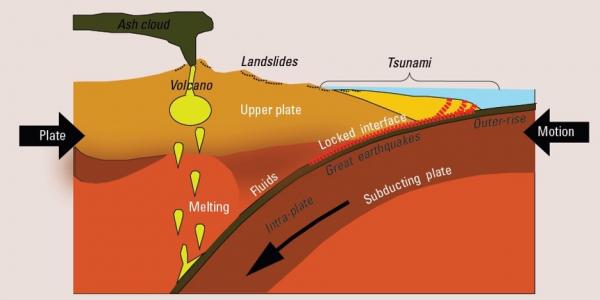Advancing the Frontier of Subduction Zone (Earthquake) Science, by the USGS and its Partners
Joan Gomberg
USGS

- Date & Time
- Location
- Online-only seminar via Microsoft Teams
- Host
- Erin Wirth
- Summary
Like many of its partners, the USGS has recognized the tremendous opportunity for advancing earthquake science that subduction zones (SZs) offer, because of 1) the extraordinary diversity of SZ earthquakes and other natural phenomena they initiate and respond to, 2) the new perspectives inspired by required multi-disciplinary and international work, and 3) technological advances enabling offshore exploration. Participation of USGS personnel in SZ-relevant partners’ programs helps to ensure that the USGS fulfills its mandate to assess earthquake hazards and provide products useful for reducing risk. This mandate distinguishes USGS’s SZ activities, but also complements the goals of its many partners. USGS SZ science has largely been motivated and guided by its scientists, but with growing engagement at higher authoritative levels to reprogram and request new SZ-targeted resources. Although not a formal USGS project or program, SZ issues figure prominently in those that are, such as Powell Center projects focused on Cascadia megathrust recurrence and another on tsunami sources, the ShakeAlert Earthquake Early Warning project, the USGS-USAID Disaster Assistance programs, and a Risk Research and Applications Community of Practice. We present a few examples of forefront USGS SZ research, conducted in partnership with numerous collaborators. These include field and modeling studies of paleo-earthquake shaking proxies such as ‘fragile geologic features’ and onshore and offshore landslides, implementation of new seafloor geodetic measurement capabilities for event to coupling studies, terrestrial-quality resolution of submarine subsurface and surficial imaging and coring to test paradigms about recent and paleo-earthquakes, and much more!
Closed captions are typically available a few days after the seminar. To turn them on, press the ‘CC’ button on the video player. For older seminars that don’t have closed captions, please email us, and we will do our best to accommodate your request.
 Jump to Navigation
Jump to Navigation